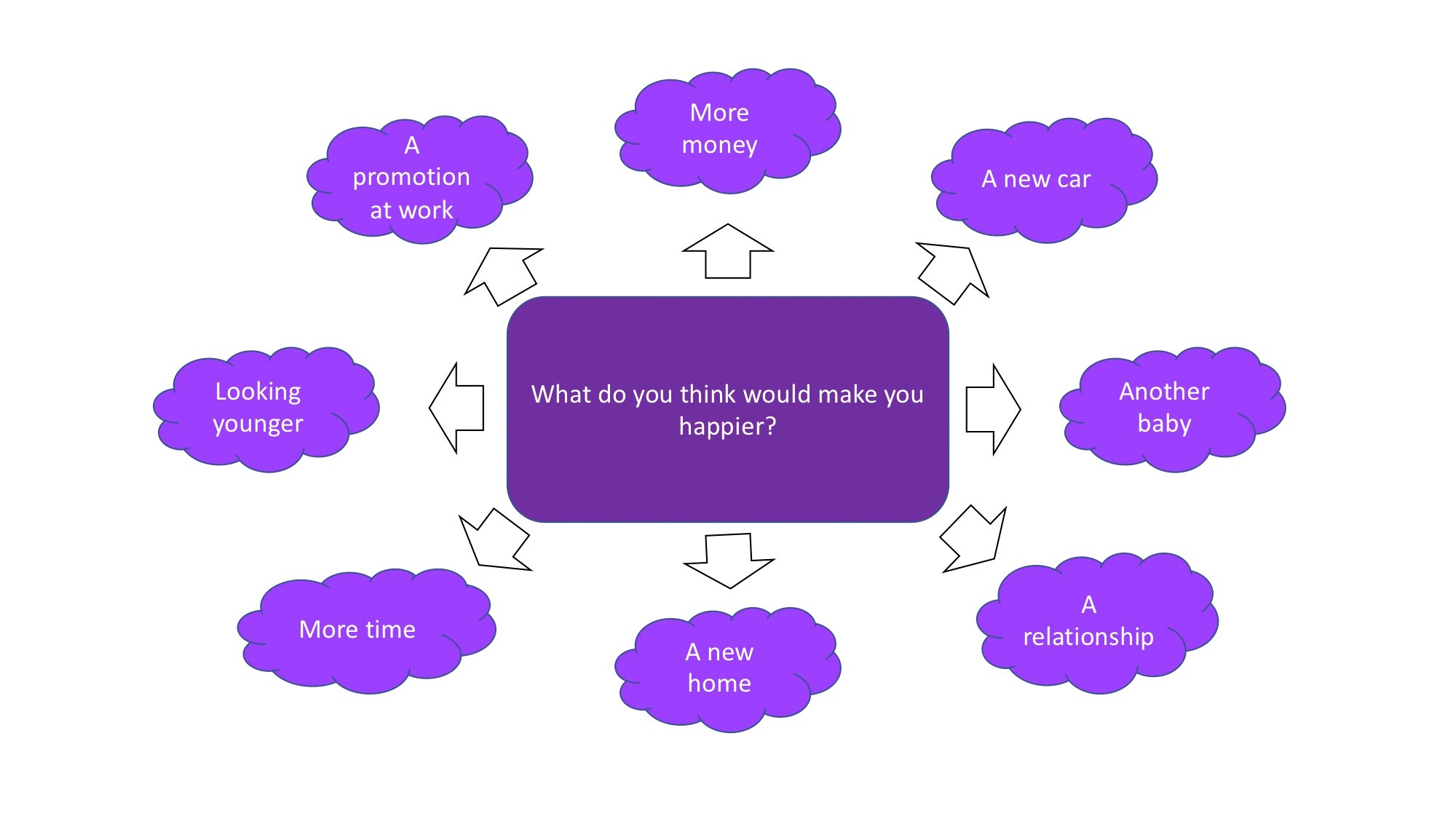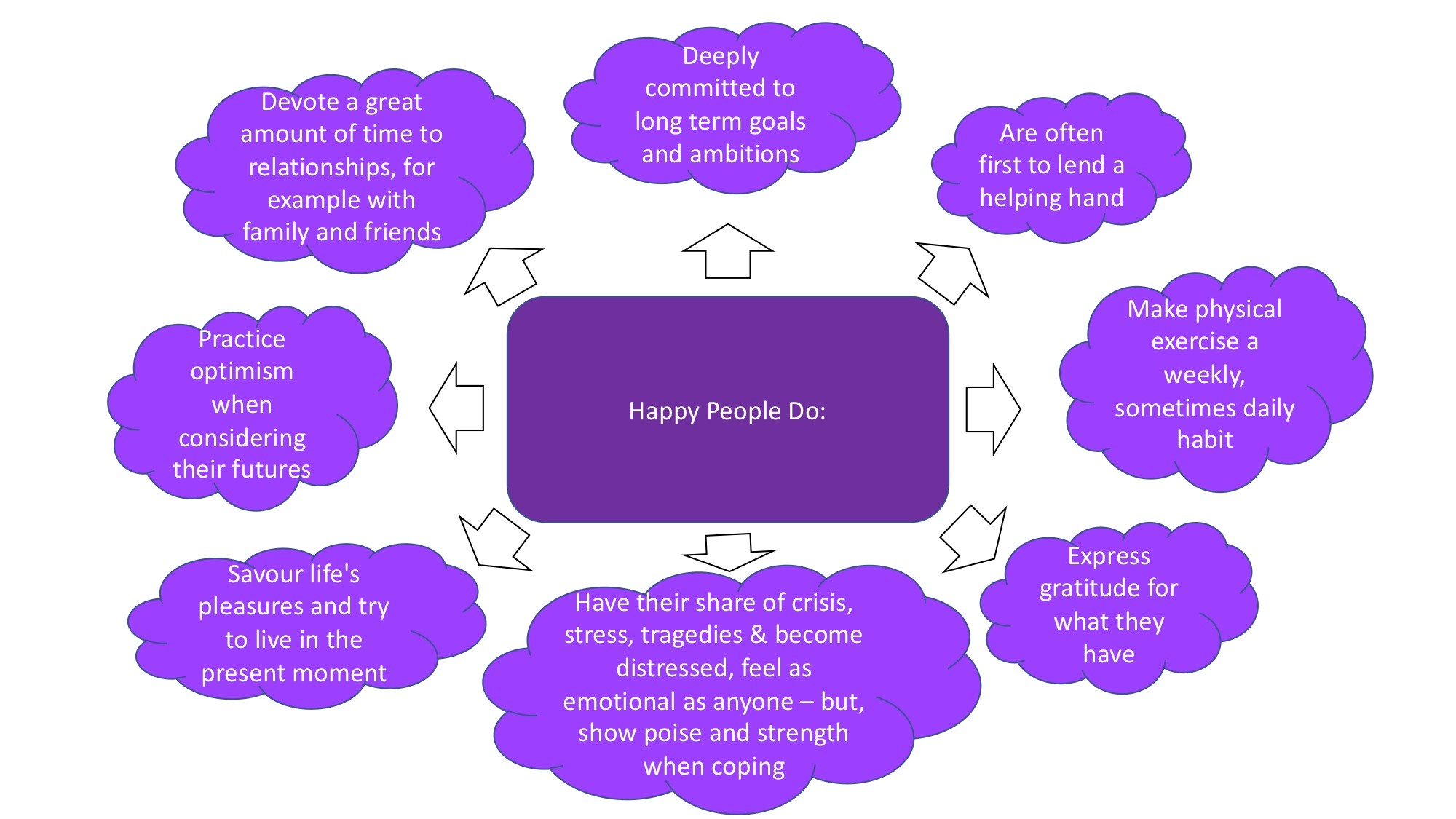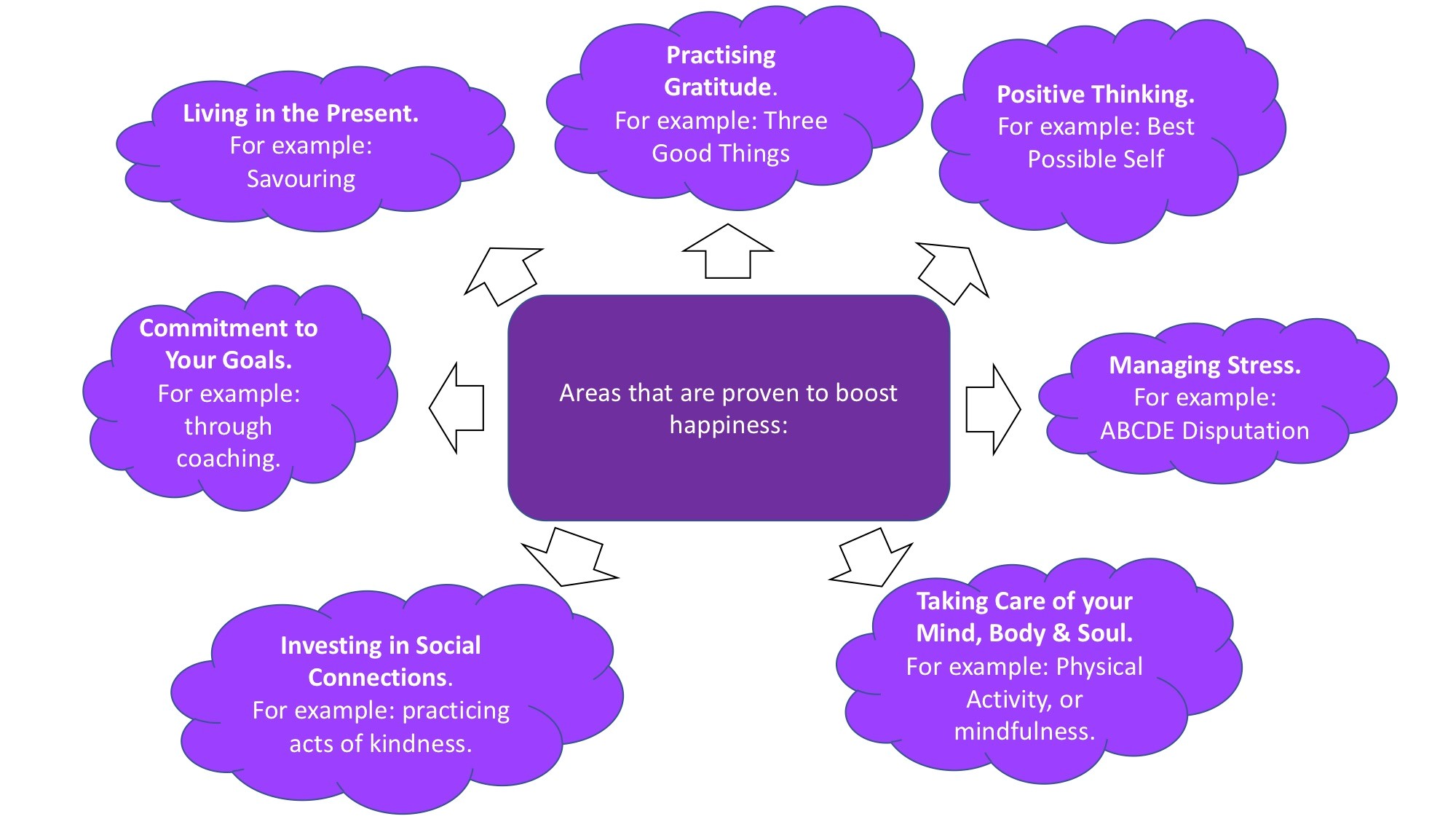- Walking
- WalkTall Group
- When is it too hot to walk in Spain?
- What are the benefits of using Wikiloc i...
- Walk With Purpose and Raise Funds with t...
- WalkTallSpain Walking Videos
- How to keep cool walking in Spain
- Walking Routes
- WalkTallSpain Merch
- PELIGRO Dangers of Walking & Hunting
- Physical & Mental Benefits of Walking
- More articles here »
- Writing
- Spain
- Therapies
- Partnership Hub
Happiness (Guest Blog)
Most of us want to be happier. In his 2000 study, Diener found that 69% of people who took part, from 42 different countries; put happiness, as their top life aspiration.The term ‘happiness’ includes our over-all life satisfaction, satisfaction in our relationships, at work and in areas such as health, along with having upbeat emotions and practises, for example feeling pleasure, enjoyment, contentment and, love. When we feel happy, it’s harder for us to feel fear, depression, anger or anxiety. Happy people feel their life is going well and the emotions they experience fit with this feeling of satisfaction.
But that’s not all, research also suggests that people who are happy are healthier, earn more money, have better relationships and feel more satisfied in their lives. Furthermore, happiness seems cause a domino effect, creating lots more positivity within that person’s life. Nowadays, happiness is getting such good press that even governments have started to recognise its importance.
Let’s consider for a moment, what do you think makes people happier?

It’s fascinating to think about this question as it is often the case that people look for happiness in the wrong places. That doesn’t mean that looking for happiness is a waste of time, or that it is unrealistic. We simply need to recognise what we can do that will actually make us feel happier. Most people will benefit from learning how they could be happier, and this skill could be seen as vital for people who often feel depressed or low.
Achieving lasting happiness does not necessarily have to involve digging deep into our childhoods, analysing our relationships, or our past traumas. It also doesn’t mean that we need a bigger house or a promotion and, there’s no need to change our relationship status.
There are approaches we can start right away, which will not only give them us instant ‘happiness boost’ but can also, with a more long-term commitment to happiness, be the start of creating positive lifelong habits.
Of course, when we start out, there will be things that feel strange and new, some interventions may seem overly simplistic (some will seem cliché!); but rest assured this is a natural part of the process. There is no need for one person to try and use every intervention, rather, it’s a case of filtering through and thinking about the ones that will suit. With repetition and commitment, we can become steadily happier, creating new habits that are self-reinforcing and that become an integral part of we are.
In her 2007 book ‘The How of Happiness’ Sonja Lyubomirsky puts forward what she calls the ’40 Percent Solution’. The 40 Percent Solution suggests that we have forty percent influence over our own happiness. Fifty percent of our happiness is how happy we are genetically, the other ten percent is due to our circumstances, areas like health, financial situation, beauty, family and so on.
Lyubomirsky argues that every person has forty percent worth of choice. So, each of us may choose to complain, or see the worst in others and focus on scarcity and through this, reduce our own levels of happiness; or, we can learn to choose to think and act in ways that make us feel happier.
Lyubomirskys studies found the happiest people have the following things in common:

There’s not one magic solution to makes everyone happier - we all have different values, beliefs, interests and dispositions. However, there are scientifically recognised areas we can work on, using happiness interventions, awareness and reflection, that will help each of us individually, to raise our levels of happiness.
The Oxford Happiness Questionnaire is a useful starting point that can be completed today, for those who’d like an idea of their current level of happiness. This scale can then be revisited, to see what is happening to happiness levels, as we start working on becoming happier.
For long term effect, it is important we commit to working on our own happiness, in much the same way we would commit to working out at the gym, or any other important project. Also, the interventions we choose should make us feel motivated to try, and then persevere with those activities, so we can enjoy the end reward of increased happiness.
When choosing happiness interventions, the goal is to find a ‘person-activity’ fit, in other words the activity that fits the person. Lyubomirsky's person activity fit can be completed to help recognise person-activity fit.
One way we can discover how to be happier, is to spend some time figuring out what it is that makes us unhappy. Its then easy enough to look for interventions that counteract and build defences against these areas. For example, if a person feels they are easily deflated, they can look for resilience building activities or, if they’ve suffered trauma, activities that will help build coping skills.
Another option is, instead of looking for weaknesses, to start thinking about the things we are good at and, what inspires us? For example, if a person is achievement orientated, they could pursue activities that involve making and accomplishing goals, or take up a competitive sport.
It’s a good idea to think about how the interventions will fit with our lifestyles, so we can choose realistically and appropriately. For example, if an individual has very little time, they should pick activities that are easy to include, an example here could be counting the positives; simply writing down three good things that happened each day, as this is easy to fit in. It’s so important for us to take care to select and tailor happiness interventions to fit our interests and lifestyle.
Below are some areas that influence happiness:

These are some of the ways in which we can start to make a difference to our own happiness. There are numerous ‘happiness interventions’ available, I have merely provided a small overview of the tools and information available on this subject.
I have included some further references below.
- References Diener, E. (2000). Subjective well-being: The science of happiness and a proposal for a national index. American psychologist, 55(1), 34.
- Emmons, R. A., & McCullough, M. E. (2003). Counting Blessings Versus Burdens: An Experimental Investigation of Gratitude and Subjective Well-Being in Daily Life. Journal of Personality and Social Psychology, 84(2), 377-389.
- Fredrickson, B. L. (1998). What good are positive emotions?. Review of general psychology, 2(3), 300.
- Hefferon, K., & Mutrie, N. (2012). Physical activity as a “stellar” positive psychology intervention. Oxford handbook of exercise psychology, 117-128.
- Henricksen, A., & Stephens, C. (2013). The happiness-enhancing activities and positive practices inventory (HAPPI): Development and validation. Journal of Happiness Studies, 14(1), 81-98.
- Lyubomirsky, S. (2008). The how of happiness: A scientific approach to getting the life you want. Penguin.
- Lyubomirsky, S., Dickerhoof, R., Boehm, J. K., & Sheldon, K. M. (2011). Becoming happier takes both a will and a proper way: An experimental longitudinal intervention to boost well-being. Emotion, 11(2), 391.
GUEST BLOG BY ANNA HUGHES



.jpg)

Leave a comment about this article.